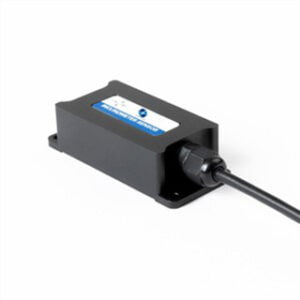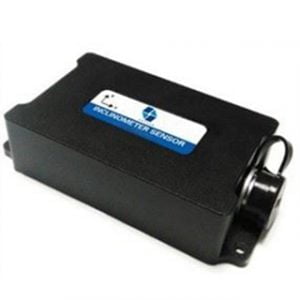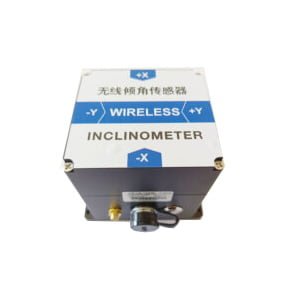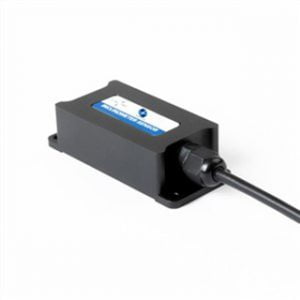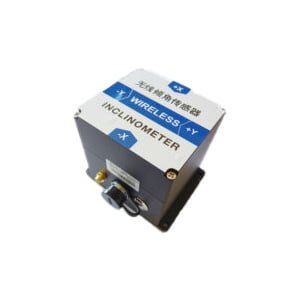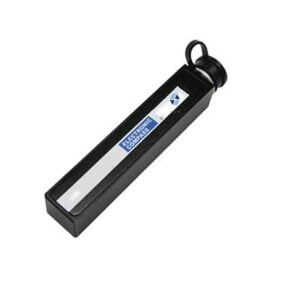Axial and spatial dimensions of tilt sensors
The conventional spatial dimension is composed of length, width and height, and the inclination sensor can measure the inclination angle of these three dimensions. Therefore, the inclination sensor can be divided into single axis, two axis and three axis according to the axis. Single-axis tilt sensor can only measure the angle of a certain azimuth; The biaxial tilt sensor can measure the angle of two perpendicular azimuths. The three-axis can measure the angle of transformation of the three directions around the arbitrary axis in three-dimensional space.
Single axis, double axis, triple axis
Inclination sensors usually refer to single-axis tilt sensors, and the theoretical basis of single-axis inclination sensors is Newton's second law. According to the basic principles of physics, inside a system, velocity cannot be measured, but acceleration can be measured. If the initial velocity is known, the linear velocity can be calculated from the integral, and thus the linear displacement can be calculated. So it's actually an acceleration sensor that uses the basic principles of inertia. The dual-axis inclination sensor is based on the single axis combined with specific practical requirements, designed and conceived a measurement tool for the angle between two directions.
Based on the direct measurement of the acceleration of the measured object, the biaxial inclination sensor can obtain the linear velocity of the object through integral calculation, and then further obtain the displacement of the object. In essence, the inclination sensor is still an inertial sensor, which follows the inertia law of object motion and the integral calculation method. The two-axis sensor is designed in view of this basic principle, in addition to other measurement principles and measurement methods.
In short, the dual-axis in tilt sensor has the measurement advantages of the single-axis inclination sensor, but also has the measurement effect that can not be achieved by the single axis, with an increasingly wide measurement range. However, the accuracy of the dual-axis inclination sensor is not as good as that of the single axis, and it should be noted that the dual-axis inclination sensor can measure the angle of the X-axis and the Y-axis, but can not measure the X-axis and the Y-axis at the same time, only one axial angle can be measured at a time, the X-axis or the Y-axis, if measured at the same time, it will cause the horizontal axis error and cannot determine its value. Depending on the desired measurement data, you can choose different tilt sensors. In theory, if there are three dimensions of angle change, you need to use a three-axis inclination sensor, but in reality, the three-axis inclination sensor does not exist, more accurately, the two-axis inclination sensor can measure the three-dimensional angle change, without using the so-called "three-axis inclination sensor." As for why there is no three-axis inclination sensor, it is because when the inclination angle of a incline plane and the X and Y axes is determined, the incline plane is fixed, and there is no possibility of change, that is, the angle between the Z axis is also a definite value.
Taking the X-axis uniaxial tilt sensor as an example, the measuring surface of the sensor can only have an angle with the X-axis, and the inclination plane is fixed on one axis (Y-axis) for rotation. Similarly, the Y-axis uniaxial inclination sensor rotates with the X-axis as the fixed axis. The inclination plane of the biaxial inclination sensor can have an angle with both the X and Y axes, or only one of the axes can have an angle, which is the general case of the inclination plane of the biaxial inclination sensor.
From the above comparative data analysis of the uniaxial and biaxial inclination sensors, it can be seen that the active part of the inclination plane of the biaxial inclination sensor is a point or line, while the single axis can only be a line. For example, the inclination of the vertical wall is the active part of the combination line between the wall and the foundation, which can be measured by the single-axis inclination sensor ER-TS-3160VO; The process of slow toppling of a vertical rod is based on the contact point as the active part, so it is necessary to use the dual-axis inclination sensor ER-TS-4250VO for measurement. In fact, in the process of tilting the vertical rod, no matter which direction it tilts, one thing is certain, that is, the angle between the tilting position and the original position is the angle between the tilting plane and the horizontal plane, this angle may only be a single X or Y axis inclination, or both, which is why it can only be measured with a dual-axis inclination sensor.
More Technical Questions
2.What are the Three Types of Tilt Sensor?
3.What can a Tilt Sensor be Used for?
4.Is a Tilt Sensor the Same as as an Accelerometer?
5.Is Tilt Sensor Analog or Digital?
6.What are the Advantages of Tilt Sensor
Products in Article
